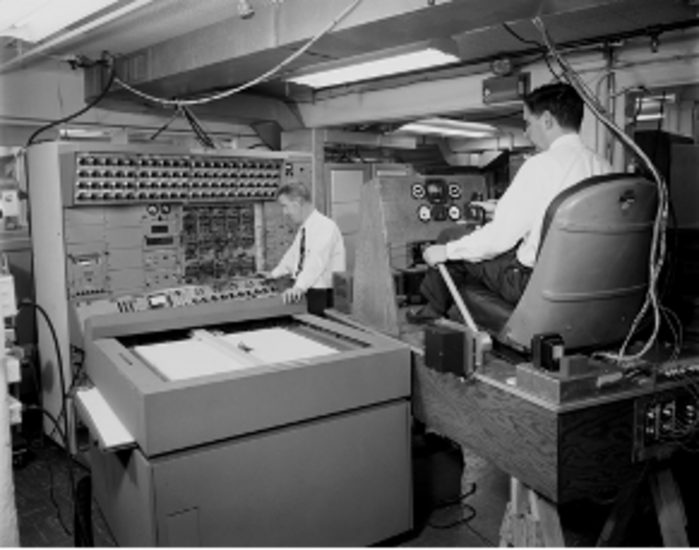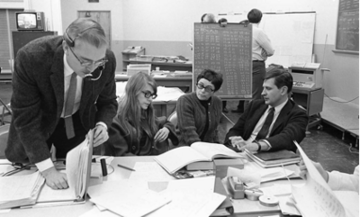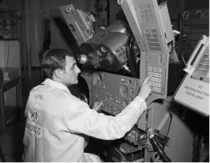Digital Trove of Apollo Artifacts Debuts on Draper’s New Website: Hack the Moon
CAMBRIDGE, MA—To celebrate the 50th anniversary of the Apollo 11 moon landing and to inspire the next generation of engineers, Draper is launching a website that shares a treasure trove of newly released photos, videos and stories about the unsung heroes behind the moon landing.
Draper President & CEO, Dr. Kaigham J. Gabriel explained, “Most people know the stories of the astronauts who landed on the moon, but few people know the stories of the engineers who got them there.”
The site details the remarkable story of the engineers behind some of the revolutionary technologies developed for the Apollo missions. In the face of epic challenges, and with a fraction of today’s technology, these are the people who navigated us to the moon and back.
Hack the Moon celebrates the engineers behind the Apollo Program who demonstrated remarkable ingenuity in solving real-world problems. When it seemed impossible, they made it a reality. Today, that revolutionary technology lives on in every plane we fly and computer we use.
Hack the Moon is free and open to the public. Visitors to the site—wehackthemoon.com—will find more than 2,000 images, 200 pieces of original content and 150 videos that tell the story of the Apollo missions. The site features a handy search engine, a mobile-friendly design and special sections on the people, the technology and the missions.
A section called “Hack Extras” takes visitors to podcasts, resources, upcoming events, trivia quizzes and more. “In Their Own Words” presents the personal stories of many of the engineers of Apollo as they encounter and overcome challenges and make some surprising discoveries.
Visitors can read personal accounts from Apollo astronauts such as Jim Lovell’s recollection of seeing the moon for the first time, and Harrison Schmitt’s story about his scientific discovery on the moon. Among the many video stories, Draper engineer Don Eyles recounts his experience averting disaster during Apollo 14, and Margaret Hamilton remembers the happy accident in the lab that led her to develop Apollo’s error detection recovery code.
Hack the Moon will be launched publicly April 8, 2019, at the 35th Space Symposium in Colorado Springs, Colo. Attendees are invited to visit Draper at booth 1139 and take a tour of wehackthemoon.com.
Wehackthemoon.com was curated and developed by Sugar Films Ltd.
Released April 8, 2019



















